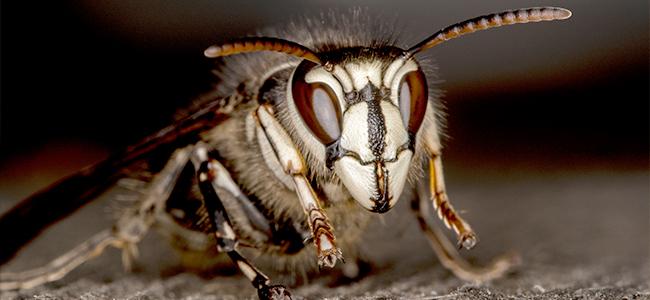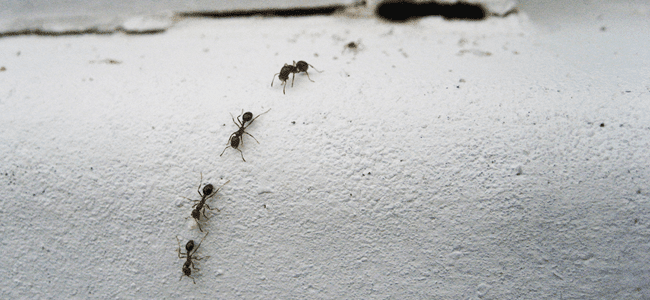
Why Professional Wasp Removal In DC is Worth It
07/09/2019
As we head out of spring and into summer you're going to start noticing more stinging insects buzzing around in your yard. This isn't necessarily a...
READ MORE >
Stinging insects can be beneficial to have around but can also be a dangerous pest to contend with. Since July is about the time when yellow jacket and hornet nests have become more developed we encourage those who live in Maryland and the Washington D.C. area to learn more about these insects and their behavior as well as what to look out for on their property.
Although yellow jackets are often mistaken for bees they actually belong to a family of wasps known as Vespidae. Yellow Jackets are social wasps that live in nests and are recognized by their characteristic black bodies with yellow markings that resemble stripes. Yellow Jacket wasps prefer to build their nests in the ground but may also be found nesting in attics, behind walls, in tree cavities as well as other landscape. In the springtime the queen will emerge from overwintering to begin construction on her paper nest. Over time the nest will grow in size (and strength) resulting in multiple layers, hundreds of individual cells, and anywhere’s from 30-55 compartments surrounded by a paper wall. A typical Yellow Jacket nest can house upwards of several thousand wasps by late summer.Whether you are walking across your property, mowing your lawn or simply enjoying an afternoon outside it would be wise keep on the lookout for nests in the ground as well as yellow jacket activity around your home in order to prevent a stinging encounter with these insects. Yellow jackets are not known for their good humor and will attack if disturbed or irritated and, unlike bees, have the ability to sting more than once.
Baldfaced hornets are the larger of the two stinging insects and are mostly black with a characteristic white pattern over their face. They tend to build aerial nests. Likely places to find such a nest include trees, chimneys, under eaves, behind siding, in barns, attics and other structures. In manner similar to yellow jackets, a baldfaced hornet queen will also begin a new nest once spring arrives and the weather warms up. Combining her saliva with loose bark and other paper strips she will create a small gray nest with several layers inside.
Of the two pests, baldfaced hornets have a more docile nature and are not provoked as easily. This may be because their nests tend to be higher up and are less likely to be disturbed. Don’t dismiss them as a threat to your family and self though. If they feel that their nest is being threatened they will become more aggressive and are more inclined to sting.
If you spot yellow jackets, hornets or other stinging insects on your property, contact American Pest right away. Any attempts to remove a nest are likely to result in failure or injury if done by someone other than a trained professional. It is also important to remember that a yellow jacket sting could potentially lead to a severe or life threatening allergic reaction. Don’t take chances with the health and welfare of your family this summer. Keep your eyes out for activity and watch where you put your feet down.

07/09/2019
As we head out of spring and into summer you're going to start noticing more stinging insects buzzing around in your yard. This isn't necessarily a...
READ MORE >

03/15/2017
One day it's sixty degrees, the next it's snowing--- so when can we expect the return of some of the most dreaded springtime pests? And where have ...
READ MORE >

06/18/2012
Learn why European Hornets are one insect you don't want on your bad side and what can be done about these "Stinger Happy" critters....
READ MORE >

04/20/2012
Spring is in the air and after a dreary mild winter, there’s nothing better than breathing in the fresh air and watching the flowers bloom.&n...
READ MORE >

Protect your home and family from nuisance and potentially damaging pests with a Preferred Care home pest control plan. Starting at $49/month

Don't let the bed bugs bite a second longer. Contact American Pest for the most comprehensive bed bug control in the industry. Learn More

Our certified rodent control pros will put an end to your frustration by getting rid of rats and mice inside your home. Learn More

Say goodbye to wood-destroying termites in your home when you contact American Pest for expert termite control. Learn More

Trust American Pest to deliver professional backyard tick control services that are guaranteed to get results. Learn More

Don't spend the warm-weather season indoors, find out how American Pest's professional treatments get rid of mosquitoes. Learn More
Fill out the form and recieve feedback in less than 5 minutes. For immediate service please call.